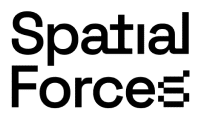Yerwant is an architect with a diverse background in practice and education. He completed his architectural studies with a Master’s degree from the Lebanese Academy of Fine Arts (ALBA) and a Postgraduate Master’s degree from the Institute for Advanced Architecture of Catalonia (IAAC). With over a decade of professional experience, Yerwant has contributed to a variety of projects across the globe, notably in the Middle East, the United States, and Europe. His work encompasses a wide range of sectors, including residential, cultural, hospitality, and commercial, as well as smaller scale artistic, experiential and object-oriented design projects.
Additionally, Yerwant has collaborated with External Reference Architecture Bureau, the Advanced Architecture Group at IAAC and the likes, focusing on Data-Driven Algorithmic Design, Design-to-Production workflows, Digital Fabrication, Environmental Optimization, and Generative AI, emphasizing sustainable practices and nature-based design solutions. Currently, Yerwant runs his own cross-disciplinary design practice ‘Atopos’, blurring the boundaries and exploring the spaces where disciplines intersect, bridging architecture, art, technology and ecology.














































